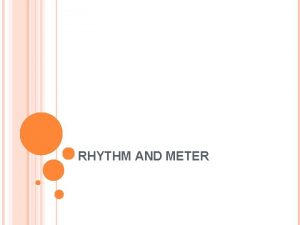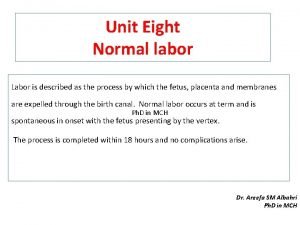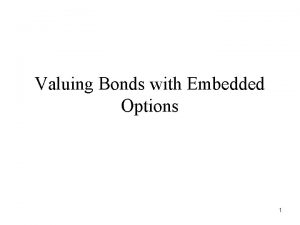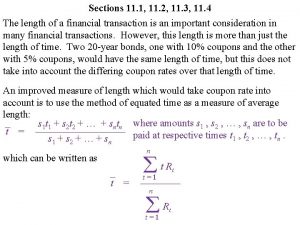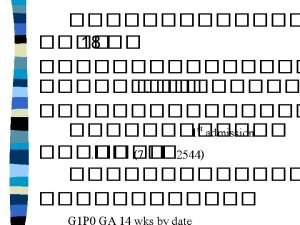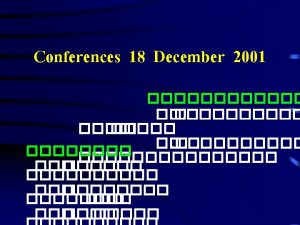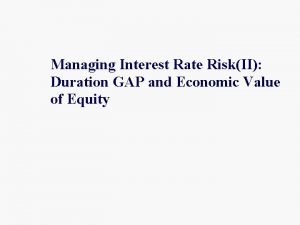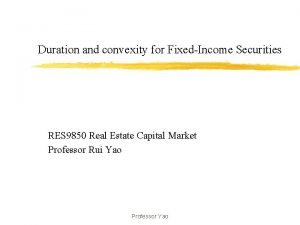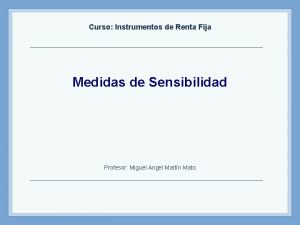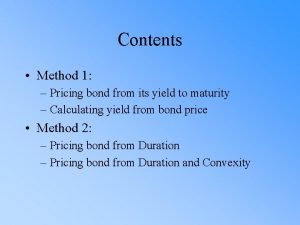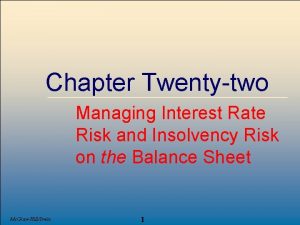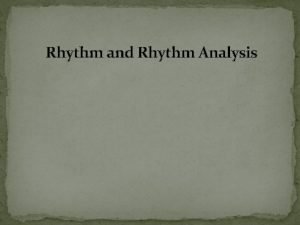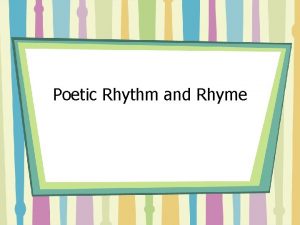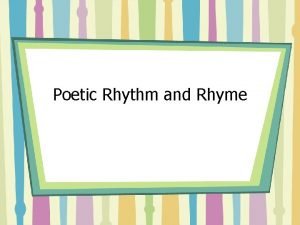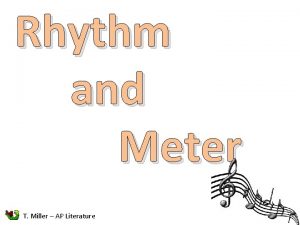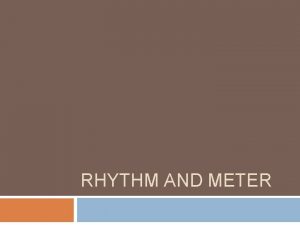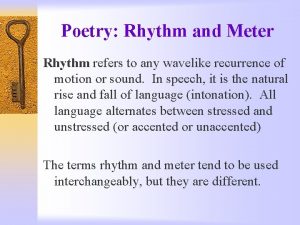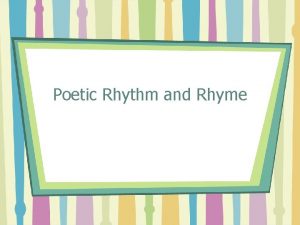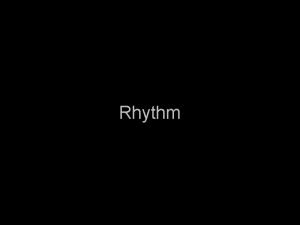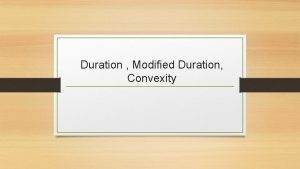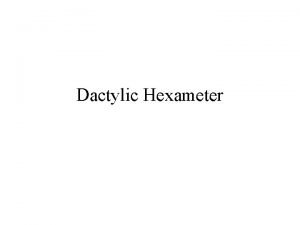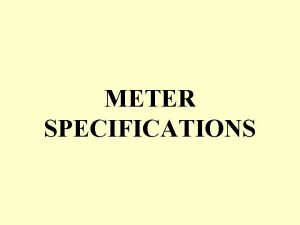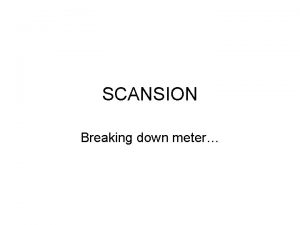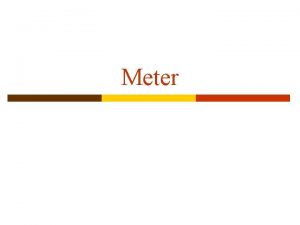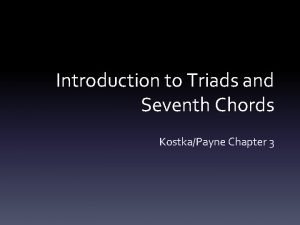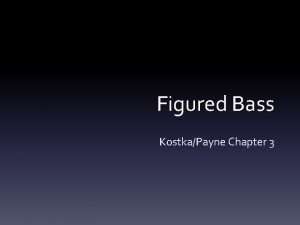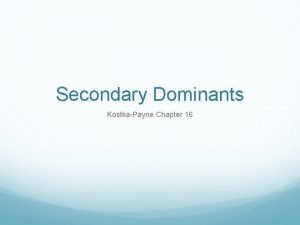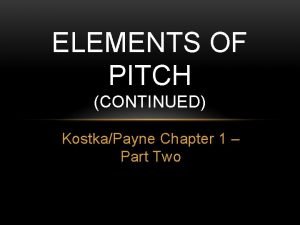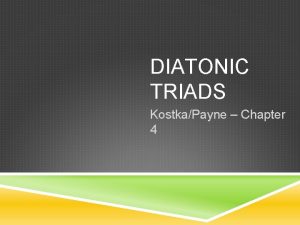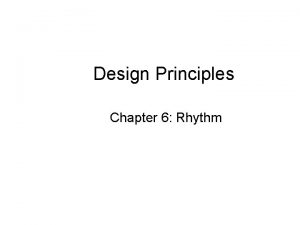Rhythm and Meter KostkaPayne Chapter 2 Note Duration


























- Slides: 26

Rhythm and Meter Kostka/Payne Chapter 2

Note Duration The length of time a note is played is called its note duration which is determined by the type of note.

Note Duration Two half notes occupy the same amount of time as one whole note.

Note Duration Four quarter notes occupy the same amount of time as one whole note.

Note Duration Notes smaller in duration than quarter notes have flags. Each flag halves the value of a note.

Note Duration Two eighth notes occupy the same amount of time as one quarter note.

Note Duration A sixteenth note has two flags and halves the value again.

Note Duration Two sixteenth notes equal the duration of an eighth note.

Note Duration Four sixteenth notes equal the duration of one quarter note.

Note Duration Notes with 3 or more flags are possible but infrequently used.

Note Duration A Breve is equal to two whole notes.

Note Duration

Rest Duration Each rest shares an equivalent note in duration.

Rest Duration

Meter Types Simple Meters Top number is 2, 3 or 4 Beat divides into 2 parts Beat note is NOT dotted

Meter Types Compound Meters Top number is 6, 9 or 12 Beat divides into 3 parts Beat note is dotted

Meter Types Duple Triple Quadruple • 2 • 3 • 4 • 6 • 9 • 12 Simple Compound

Conducting Patterns Duple Triple Quadruple

Simple Time Signatures

Simple Time Signatures Ex 2 -1

Simple Time Signatures

Compound Time Signatures In compound time, the beat divides into three equal parts. The beat note value will be dotted.

Compound Time Signatures

Simple Time Signatures Ex 2 -2

Compound Time Signatures

Meter Types �Meters that have top numbers of 5, 7, 8, 10, 11, etc. are considered ASYMETRICAL meters. �These meters have variable subdivisions.
 Rhyme scheme
Rhyme scheme Difference between note making and note taking
Difference between note making and note taking Examples of signal words
Examples of signal words Difference between note making and note taking
Difference between note making and note taking Debit note format
Debit note format Debit note là gì
Debit note là gì Note taking definition
Note taking definition Tekanan zat padat terkecil terjadi pada gambar
Tekanan zat padat terkecil terjadi pada gambar Financial documents order
Financial documents order Simple interest note vs simple discount note
Simple interest note vs simple discount note Artificial rupture of membranes
Artificial rupture of membranes Insulin peak and duration
Insulin peak and duration Bonds with embedded options
Bonds with embedded options Sat test length
Sat test length Convexity formula
Convexity formula Niub gyne
Niub gyne Miub gyne
Miub gyne Duration gap adalah
Duration gap adalah Duration of lesson plan
Duration of lesson plan Bono bullet ejercicios
Bono bullet ejercicios Portfolio immunization example
Portfolio immunization example Convexity formula
Convexity formula Ap duration heart
Ap duration heart Duration de un bono
Duration de un bono Convexity duration formula
Convexity duration formula Interest rate duration
Interest rate duration Reducing project duration examples
Reducing project duration examples
